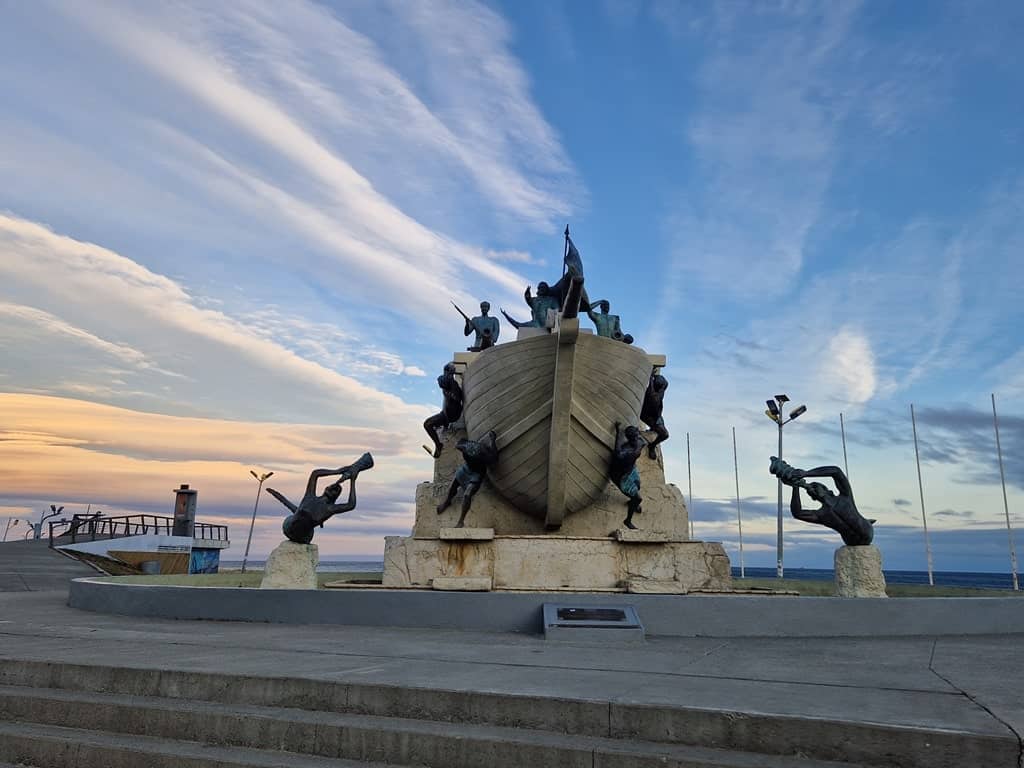Overlooking the Strait of Magellan in Chile, Punta Arenas is an enticing city with a fascinating history. Located in the southern region of Patagonia, almost on the very tip of Chile, Punta Arenas is often used as a base for adventurous excursions. From here travellers leave to explore the surrounding natural landscape and further afield to Antarctica.
But spend time in the city and you can uncover an intriguing city. Punta Arenas’ streets are woven with opulent mansions of former wool traders, a collection of museums, and delicious local eateries.
Here’s a helpful roundup of the top things to do in Punta Arenas, including some helpful tips about where to stay, how to get there and the best places to eat in town.
Disclaimer: This post contains affiliate links. This means that should you click on certain links, and then subsequently purchase a product, I will receive a small commission.
Table of Contents
A Guide to Punta Arenas, Chile
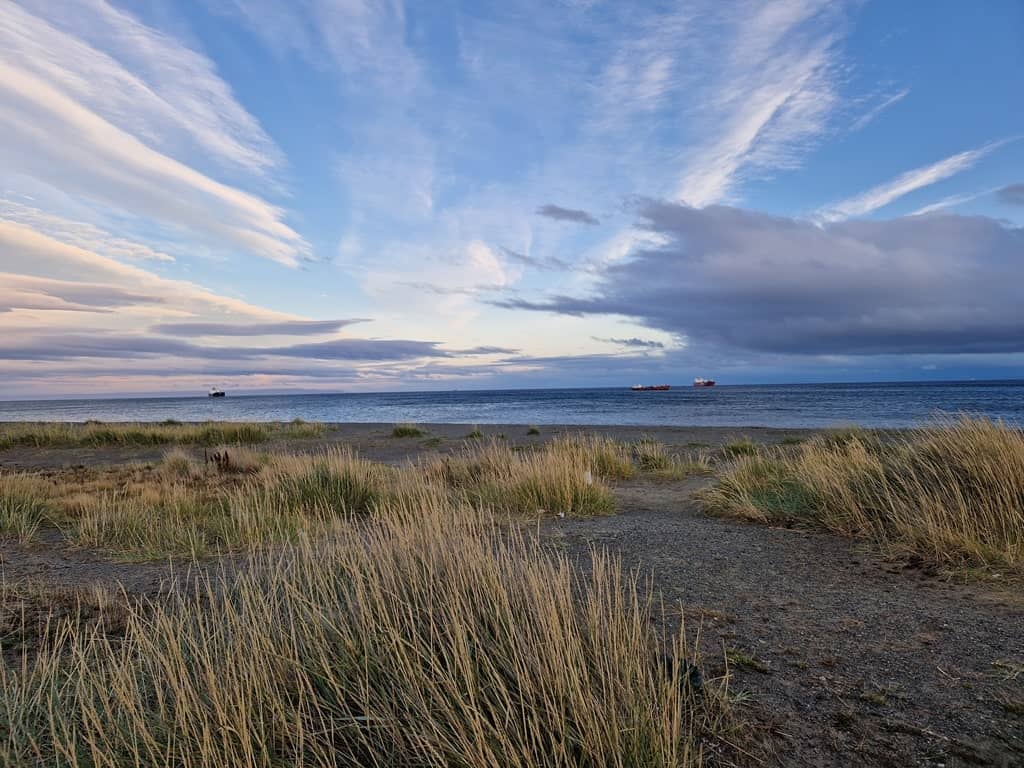
When is the best time to visit Punta Arenas?
The best time to visit Punta Arenas depends on your preferences and what you want to experience during your trip.
The summer months of December to February are the most popular time to visit Punta Arenas, as the weather is mild and pleasant, with average temperatures ranging from 10°C to 15°C. During this time, the days are longer, with up to 17 hours of daylight, allowing visitors to explore the city and its surroundings for longer periods. The summer months are also the best time to visit the nearby Torres del Paine National Park, where visitors can hike, camp, and enjoy the beautiful scenery.
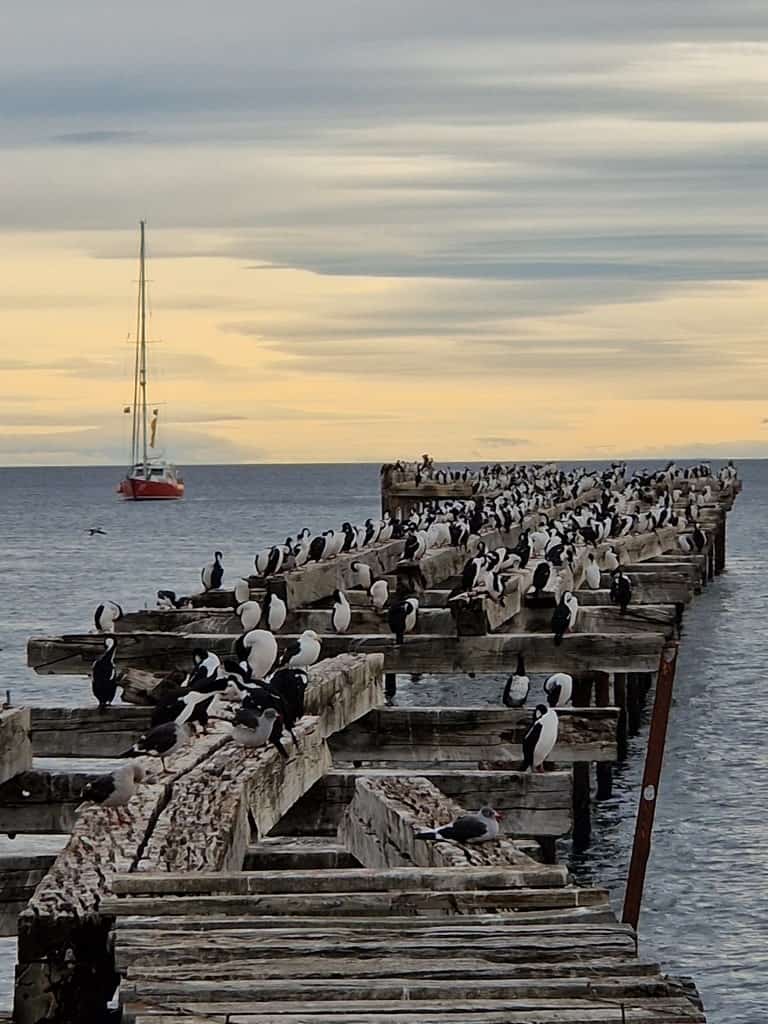
If you are interested in wildlife, the best time to visit Punta Arenas is during the winter months of June to August. During this time, the city is home to thousands of migratory birds, including the famous Magellanic penguins, which can be seen in large numbers on nearby islands. The winter months also offer the opportunity to see whales, sea lions, and other marine mammals that migrate to the area during this time.
For those interested in cultural events, the best time to visit Punta Arenas is during the months of September and October. During this time, the city celebrates its annual Spring Festival, which includes parades, music, dance, and traditional food. Visitors can also participate in the city’s Day of the Dead celebrations, which take place on November 2nd and include colorful processions and offerings to the dead.
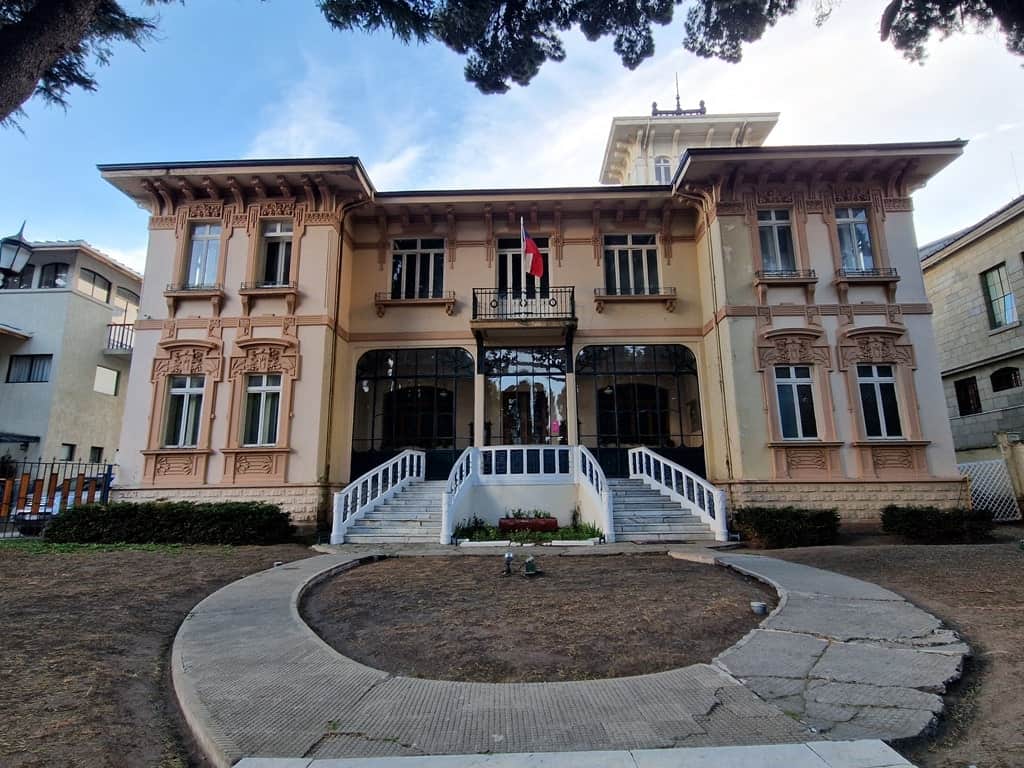
How to get to Punta Arenas
By plane
Punta Arenas is served by the Presidente Ibáñez Airport which is located around 20km north of the center of town. A number of flights land here every day connecting to Santiago and Puerto Montt. There are also connections here throughout the week to Ushuaia in Argentina as well as Porvenir and Puerto Williams.
When landing at the airport, you can reach Punta Arenas by taking a taxi, the ride costs around $10. Alternatively, you could opt to take an airport transfer. Tickets for the airport transfer service can be purchased in booths which are located in the baggage claim area, the price for a single trip into the town is around $6.
By public transport
From the port city of Puerto Natales, you can take one of the regular buses that run between the two destinations throughout the day. There’s a variety of different companies to choose from, with tickets costing around $6 for the 4-hour journey.
If you’re traveling from Ushuaia in Argentina, bus connections run every other day throughout the week and cost $45, the direct journey takes around 12 hours.
Where to stay in Punta Arenas
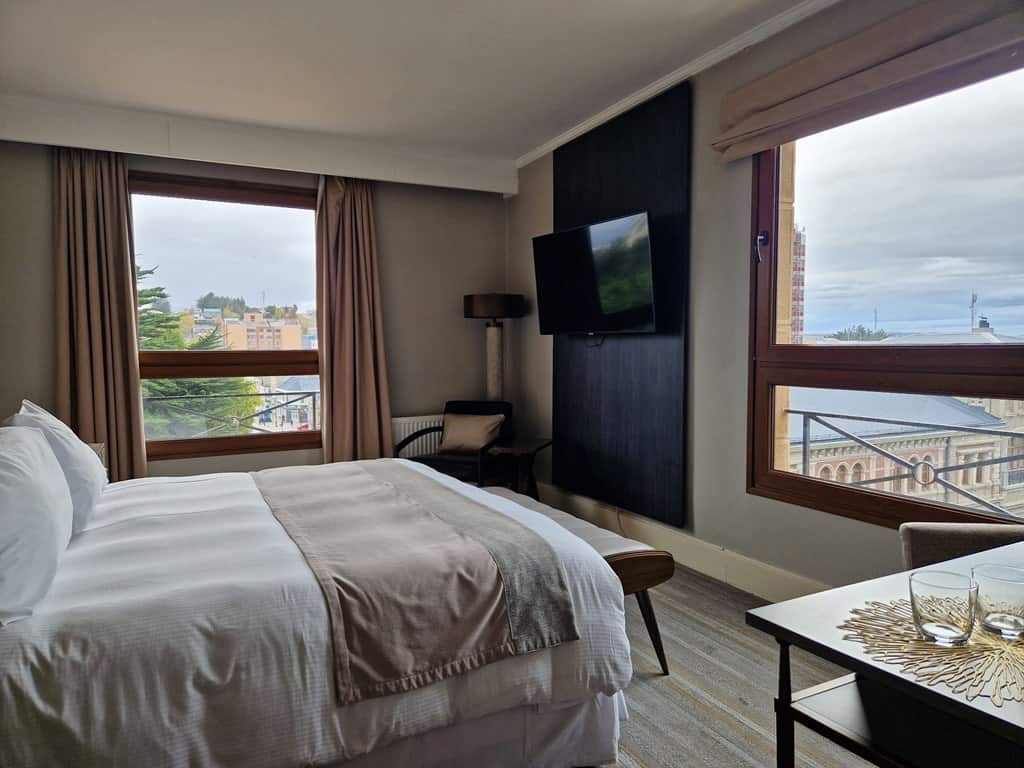
Hotel Cabo De Hornos: Located in the historic center of the town, Cabo de Hornos Hotel is a landmark accommodation option that provides a stylish place to stay. From here, you can easily reach a number of the area’s interesting sights, as well as being within walking distance of a selection of eateries.
Inside the hotel, you can expect a space that has been carefully designed with comfort in mind. Rooms are contemporary and feature high-end furnishing, large beds, and crisp white linen.
Guests can take advantage of the on-site amenities which include an a la carte restaurant and shared lounge with an open fireplace. A daily breakfast buffet is served with views looking out over the straits of Magellan.
Click here for more information and to check the latest prices.
La Yegua Loca: Providing a high level of service, this warm and welcoming hotel is one of the best places to stay in Punta Arenas. Here you can start the day with a freshly made breakfast, and then step out to explore Plaza de Armas which is located just a stone’s throw away.
After a busy day of adventure, you can return to your room to soak in the bath, enjoy delicious meals at the hotel’s inviting restaurant or unwind in the on-site garden.
Guest rooms at the hotel are decorated in natural color palettes and feature wooden furnishing and traditional crafts which add to the ambiance of the property.
Click here for more information and to check the latest prices.
Things to Do in Punta Arenas
Plaza Muñoz Gamero
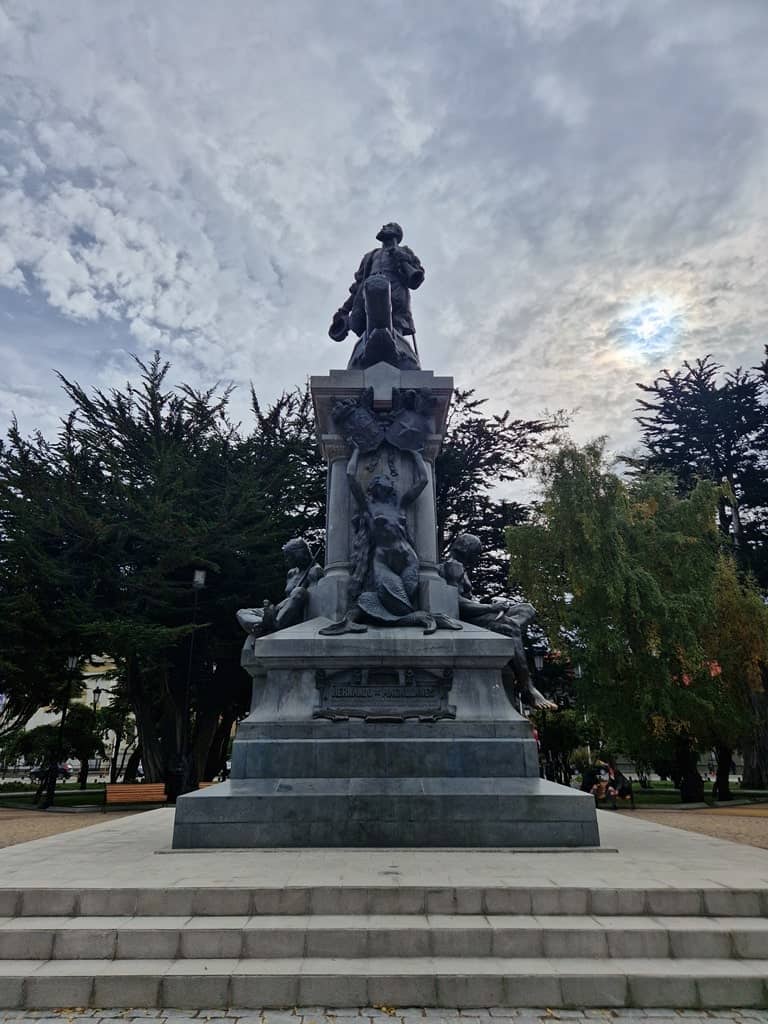
This attractive central square is the place to start your trip to Punta Arenas. The plaza is looked over by a bronze statue of Ferdinand Magellan, a Portuguese explorer noted for heading up the Spanish voyage to the East Indies in 1519.
The monument marks 400 years since Magellan’s expedition and was donated in 1920 by wealthy local wool trader José Menendez. Surrounding the statue of Magellan are statues of local people from the period, make sure to notice the particularly shiny toe of one of the characters. It’s said that if you kiss the man’s toe, you will return to the region.
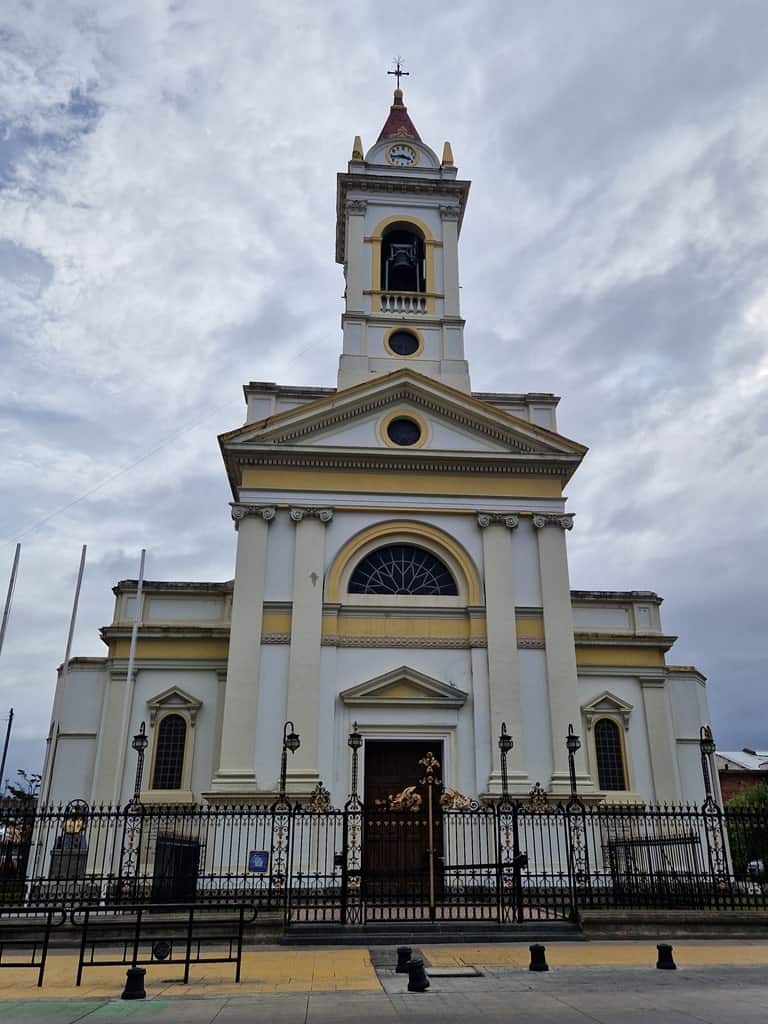
The plaza is a pleasant spot, dotted with leafy conifer trees and edged by elegant mansions, many of which were built when trade wealth poured through the city. On the northern edge is the Casa Braun-Menéndez which is home to the Club de la Unión, a private club with a bar on the lower level that’s open to the public.
Palacio Sara Braun
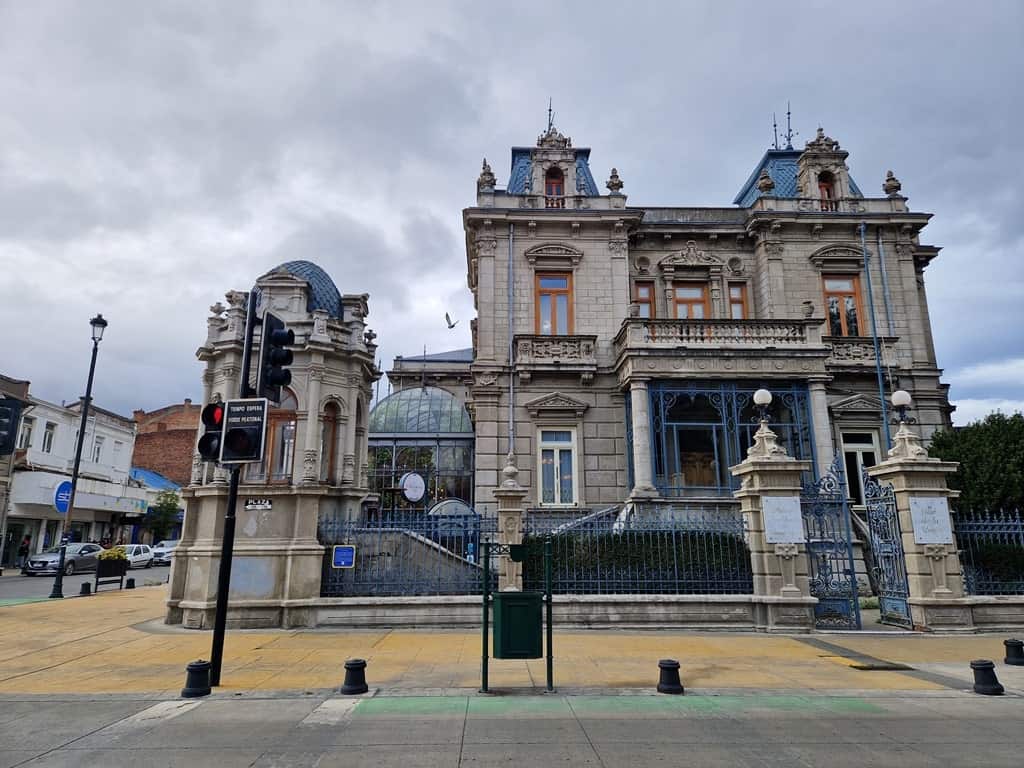
The Palacio Sara Braun is a historic building located in the heart of Punta Arenas, Chile. Built in the late 19th century, the palace was originally the home of Sara Braun, a wealthy socialite, and businesswoman who played a significant role in the development of the city.
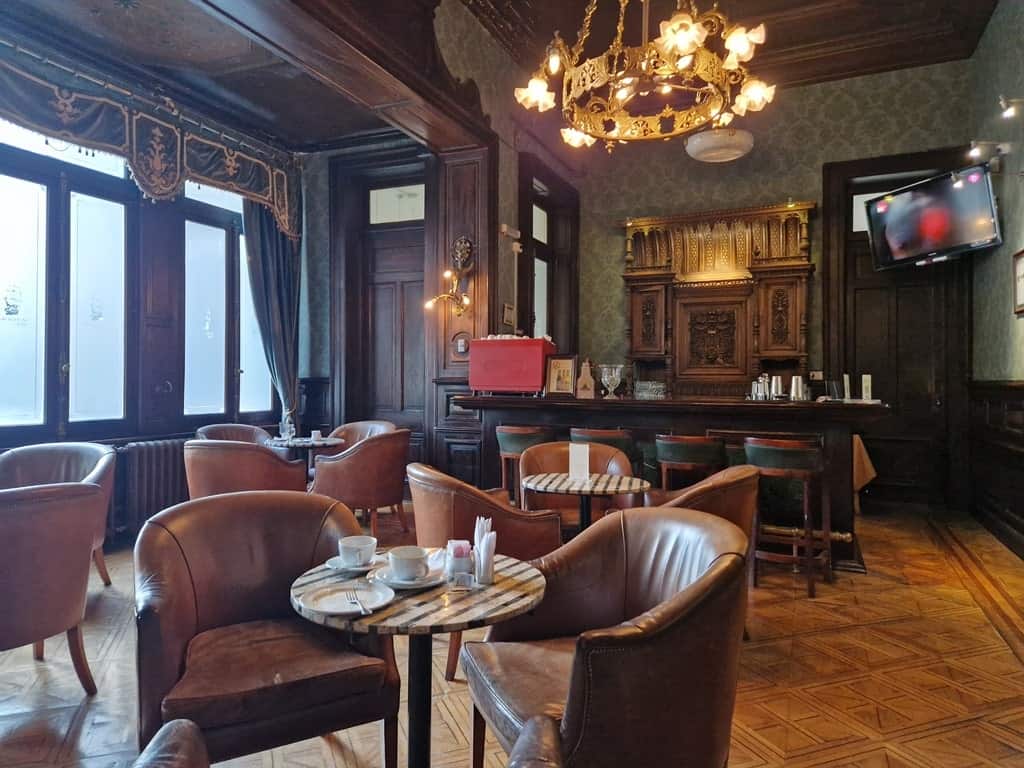
Today, the Palacio Sara Braun is a popular tourist attraction and cultural center, featuring beautiful architecture, elegant furnishings, and a fascinating history. Visitors can explore the palace’s grand ballroom, dining room, and other rooms, which have been preserved much as they were during Sara Braun’s time.
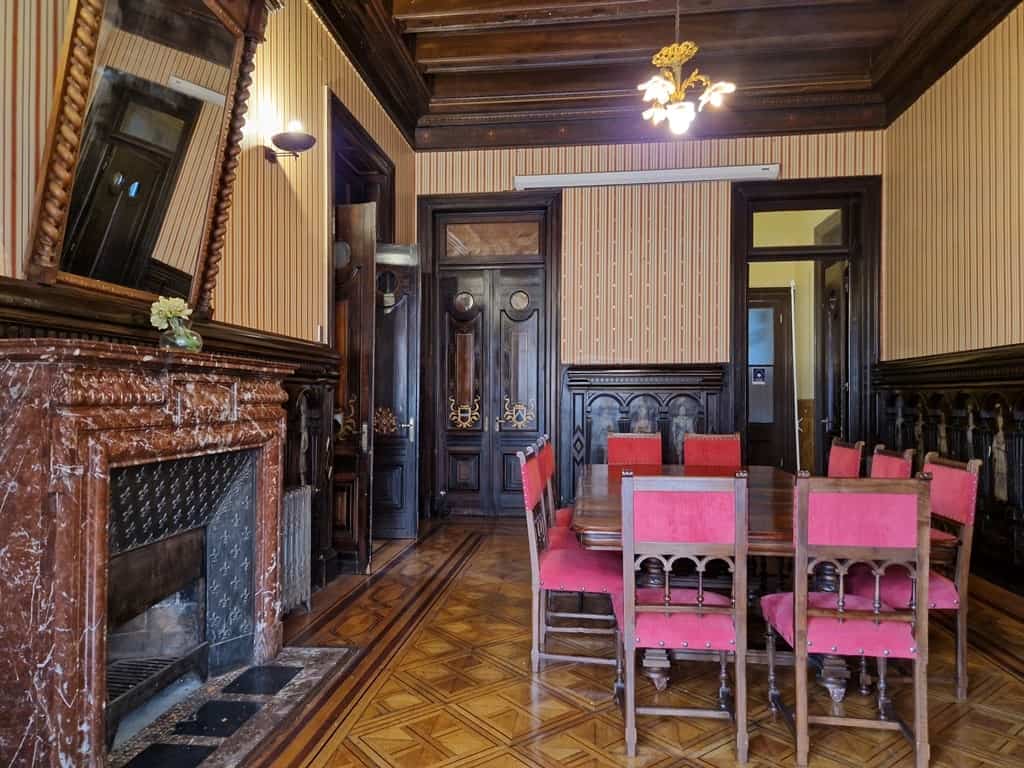
The palace also houses an art gallery, a restaurant, and a gift shop, making it a great place to spend an afternoon or evening.
Instituto de la Patagonia
Located on Avenida Bulnes, the Institute of Patagonia is a research institute that was founded in 1969. Since the 1980s it has been working as an arm of the University of Magallanes, providing a study and research center that focuses on the Americas.
The institute’s library is open for the public to come and delve into its collection. Here you can find a vast selection of old maps that date back to the pioneering days as well as a wealth of historic scientific journals.
Museo del Recuerdo
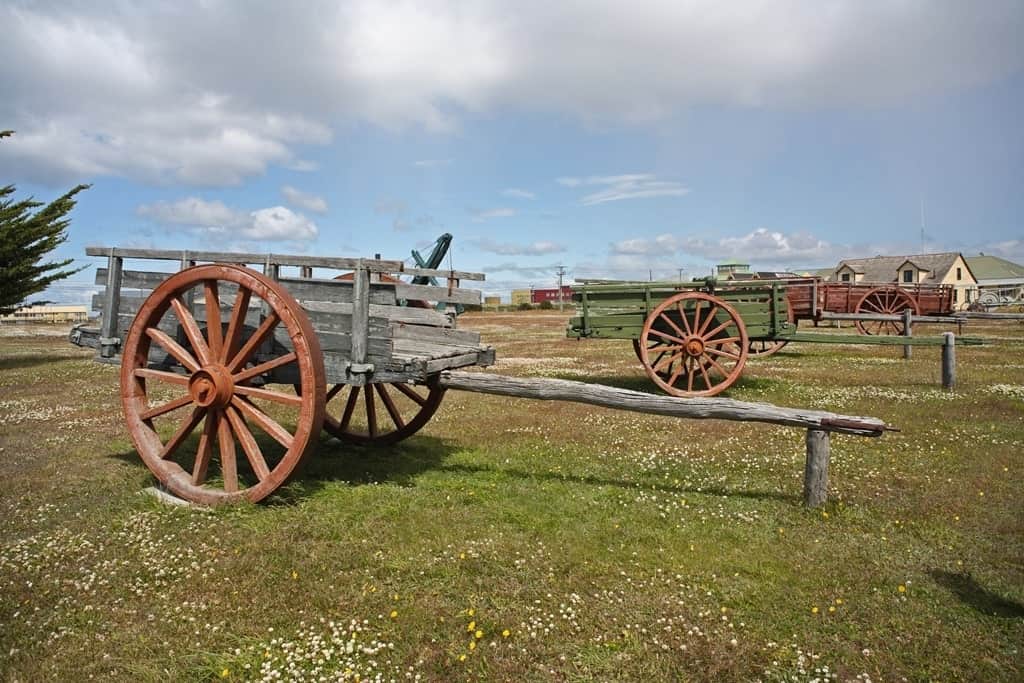
The Museo del Recuerdo, or Museum of Remembrance, is an open-air museum where you can learn about the heritage of the local agricultural industry.
Connected to the Institute of Patagonia, the museum showcases a large collection of items that are placed outside in a field. As you arrive, you will be welcomed into the museum by workers in traditional dress playing regional tunes on a variety of instruments.
As you explore the museum you will discover a collection of old farmhouses, various pieces of equipment, and different modes of transport. You can step inside the various buildings which include a pioneer’s house decorated to look as it would when it was in use, a shearing shed, and a wooden shepherd’s trailer.
Cementerio Municipal
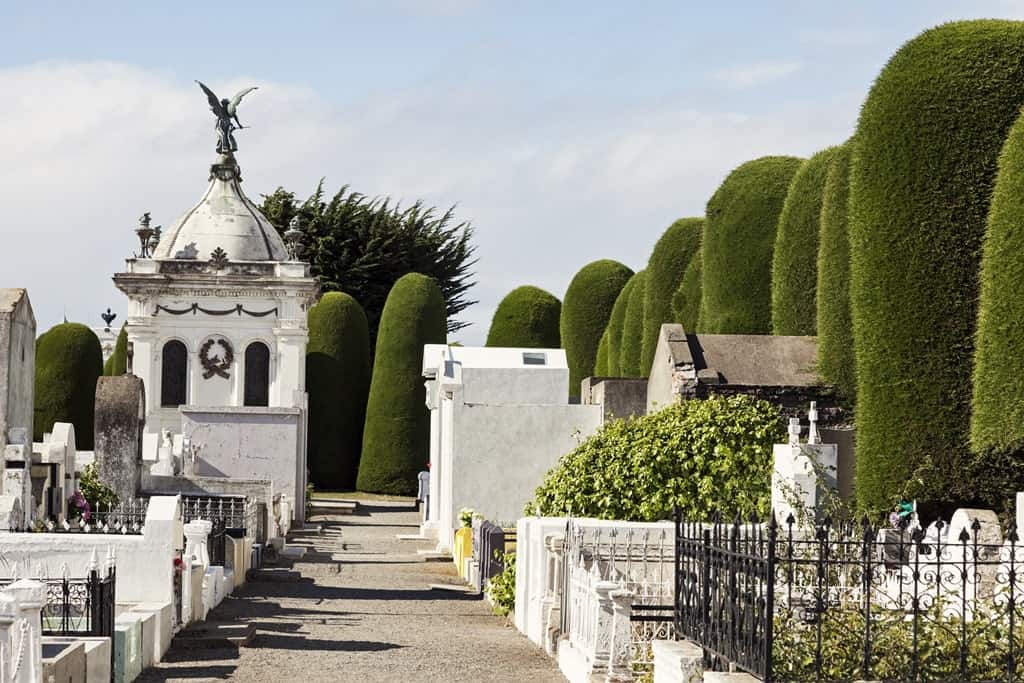
Don’t overlook this interesting cemetery when in Punta Arenas. Spread across four hectares, the cemetery no longer has space for more burials and is now preserved as a historical cemetery. Noted by various travel guides as one of the most attractive cemeteries in the region, it has been designated as a National Monument of Chile.
Opening back in 1894, there’s a large collection of graves inside the cemetery which mark the final resting place of a variety of people, from unassuming graves of immigrants to more opulent tombs. Notable burials here include José Menéndez, the local wool tycoon who decided on a replica of the enormous Monument to Victor Emmanuel II in central Rome for his tomb.
Elsewhere there are elaborate tombs that belong to the wealthy families of the late 19th century including the likes of Menèndez-Behety, Blanchard, and Greenshields. The Menèndez-Behety family was particularly influential, founding multiple organizations and buying up huge swathes of land in Patagonia.
Elsewhere, a leader of the 1921 Patagonia rural labor uprising in Argentina, Antonio Soto is also laid to rest and British sailor, Charles Amherst Milward is buried here. In order to get an idea about which graves to look out for, there’s a map located just inside the main entrance of the cemetery.
Mercado Municipal
Make sure to turn up the local Mercado Municipal hungry. This newly built local marketplace is the destination for cheap eats in Punta Arenas. Various food vendors serve up a selection of freshly caught seafood dishes and include places to pick up shellfish and fish to take home with you.
The first floor of the market is taken up by around 13 fishmongers, a handful of fruit and vegetable vendors, and flower shops. The second floor is where you’ll find a collection of craft shops that sell interesting local souvenirs to take home with you. Finally, the third floor is where the food court is situated. Boasting panoramic views of the Strait of Magellan, eating here is a great opportunity to try classic but inexpensive Chilean cuisine.
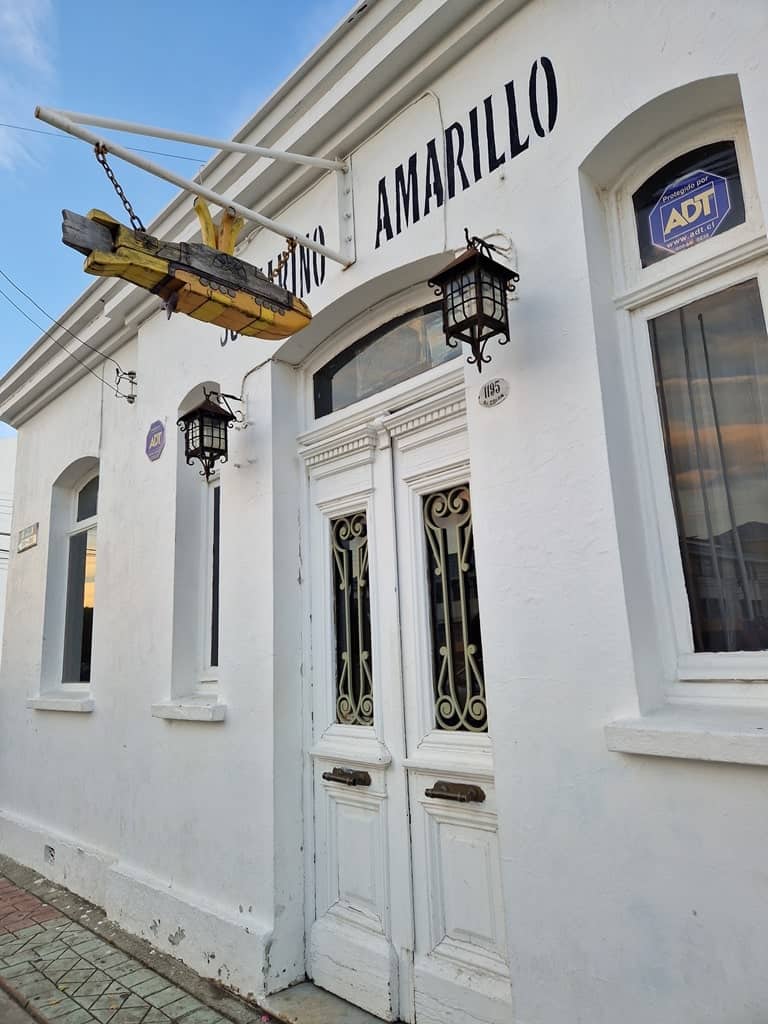
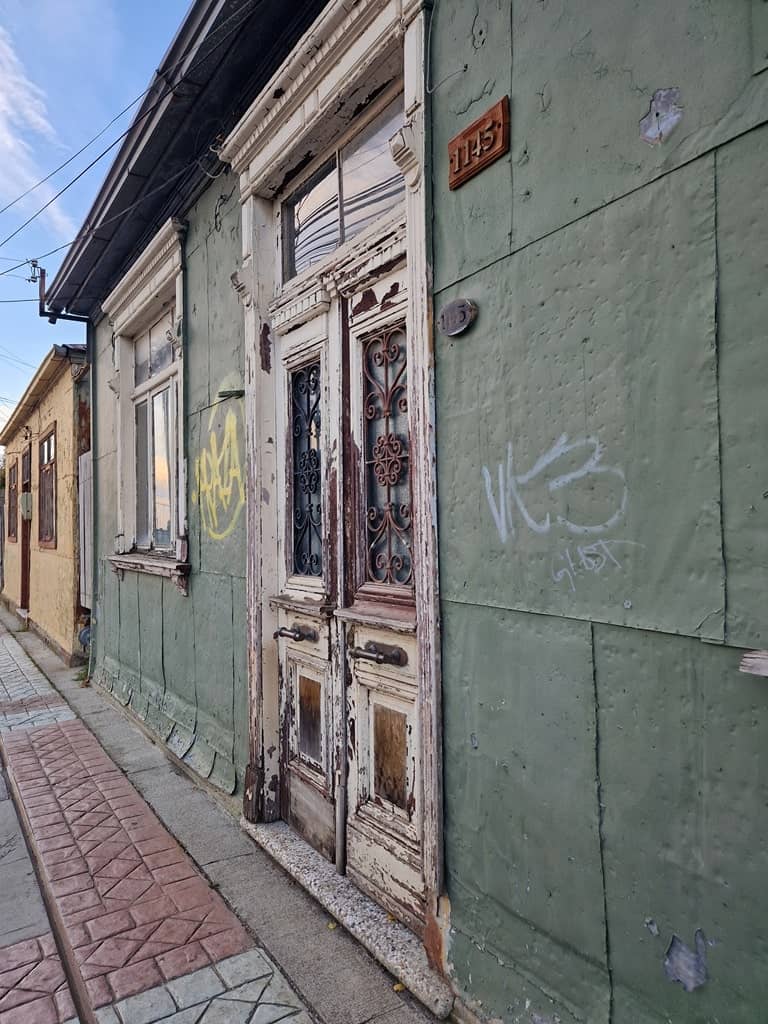
Get creative at the Art Corner
If you’re feeling in the mood to do something creative, then make your way over to Andrea Araneda’s studio at the Art Corner. The internationally selling artist lives and works in the town and her studio is also open as a showroom and shop.
Here you can browse her various paintings and pick up one of her hand-made souvenirs. If you want to visit, make sure to check the opening hours ahead of time, you might even be able to get involved in a workshop or meet the artist herself.
Nao Victoria Museum

The Patagonian region has long been connected to the pioneering voyages of colonial powers. Translating to Victory in Spanish, the Nao Victoria was one of a fleet of five ships that were famously captained by Ferdinand Magellan. The King of Spain gave Magellan special powers to lead an Armada from Spain in an attempt to navigate the world and open up new trade routes.
The fleet of ships set sail in 1519 from Spain, moving through the Atlantic Ocean and onto the east coast of South America. The fleet then traveled downward to Patagonia, finding passage through what is now known as the Strait of Magellan. Along the way, there was a series of scrummages and mutinies, and although the voyage was successful, Magellan died in 1521 in the Philippines.
Only one of those ships that made the journey actually made it all the way back to Spain – the Nao Victoria. The Victoria completed the voyage home, sailing an uncharted route across the Indian Ocean and back to Sprain in September 1522.
This museum in Punta Arenas opened in 2011 to chart the history of Nao Victoria. Here you can explore an accurate recreation of the original ship and learn all about the details of the historic journey. Spending time here is fascinating, you can get an appreciation for what these early explorers had to contend with during their treacherous journeys.
Lord Lonsdale shipwreck
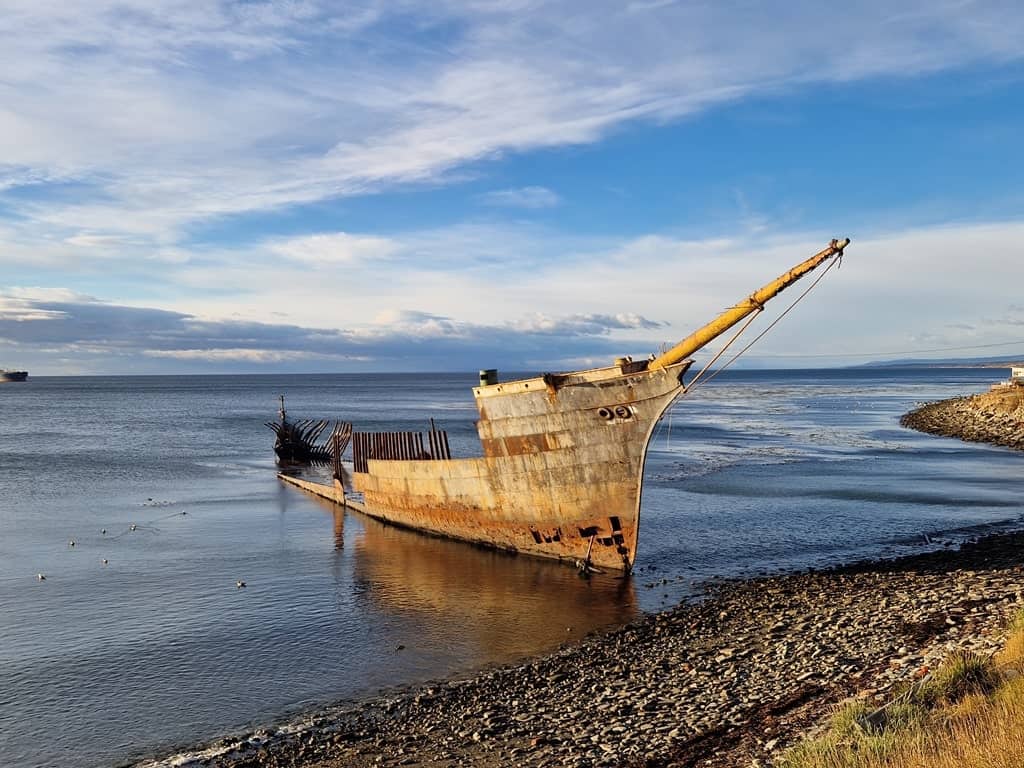
The remains of a steel-hulled sailing ship can be seen sitting in the waters just off the coast of the town. Built in 1899, Lord Lonsdale set sail from Hamburg, Germany in 1909 on a voyage to the west coast of Mexico. In those days the Panama Canal was yet to be opened and the route to the North American continent was not so straightforward.
The route took the doomed voyage through the Strait of Magellan, but during a stop for re-fuelling in the Falkland Islands 560 miles from Punta Arena, a fire ripped through the ship. Unable to control the flames, the vessel was sunk on purpose. Lord Lonsdale found its way across the hundreds of miles of ocean to reach its final resting place thanks to a deal to sell the ship to a trading company. The challenge of moving the ship to the company’s warehouses ended up being too great and they eventually abandoned it in Punta Arenas.
Now standing as a monument of the sailing route of the past, it is easy to see from the shore as it’s located a few meters out at sea.
Street Art
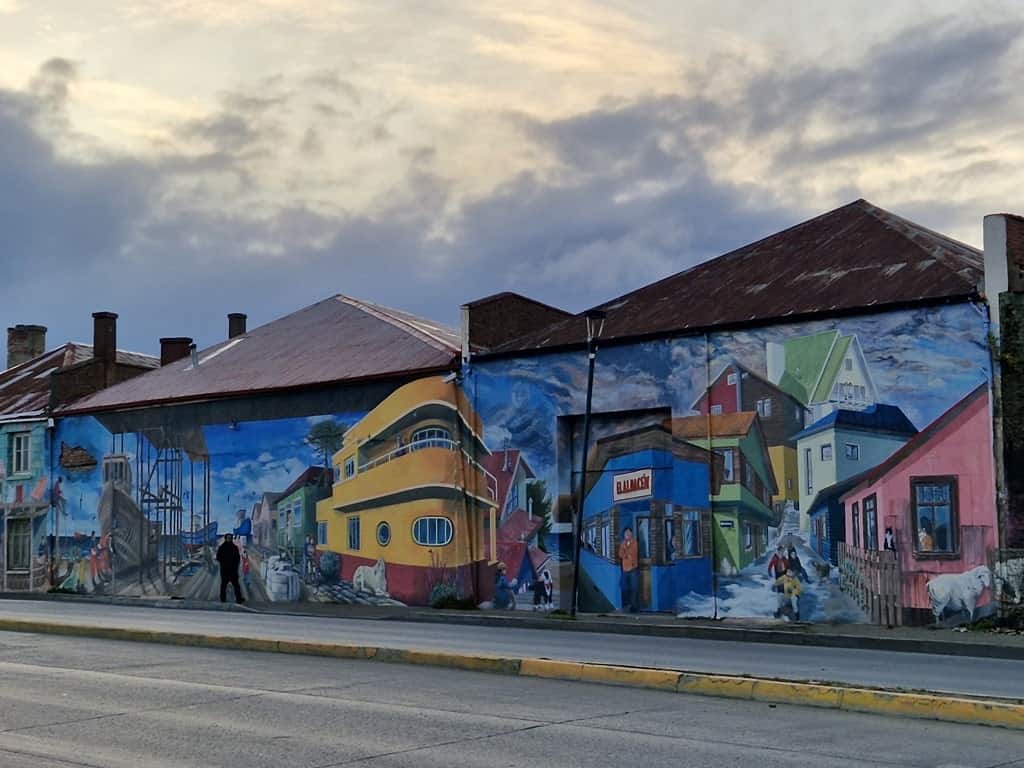
Along the streets of the town whole sides of buildings have been daubed in a colorful array of illustrations. The town’s surprising selection of street art reflects the area’s history, remote location, and modern-day mindset.
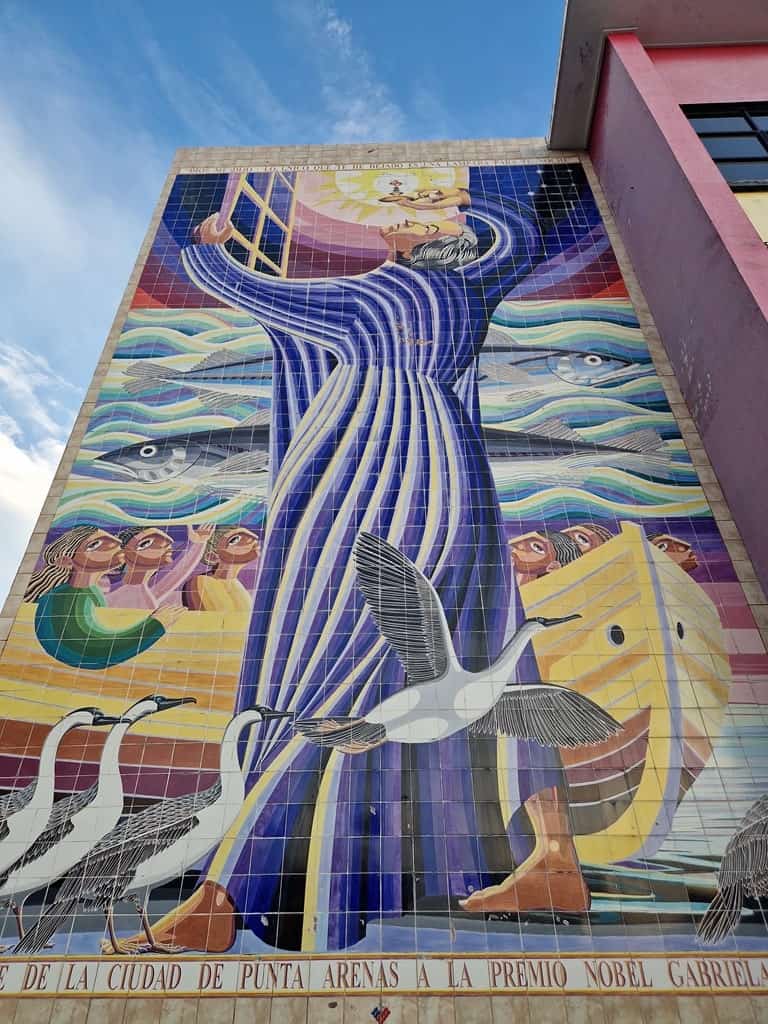
Spend some time wandering around the urban walkways, stumbling across these gigantic building-sized artworks that are mostly created by the town’s vibrant creative community.
Cerro de la Cruz
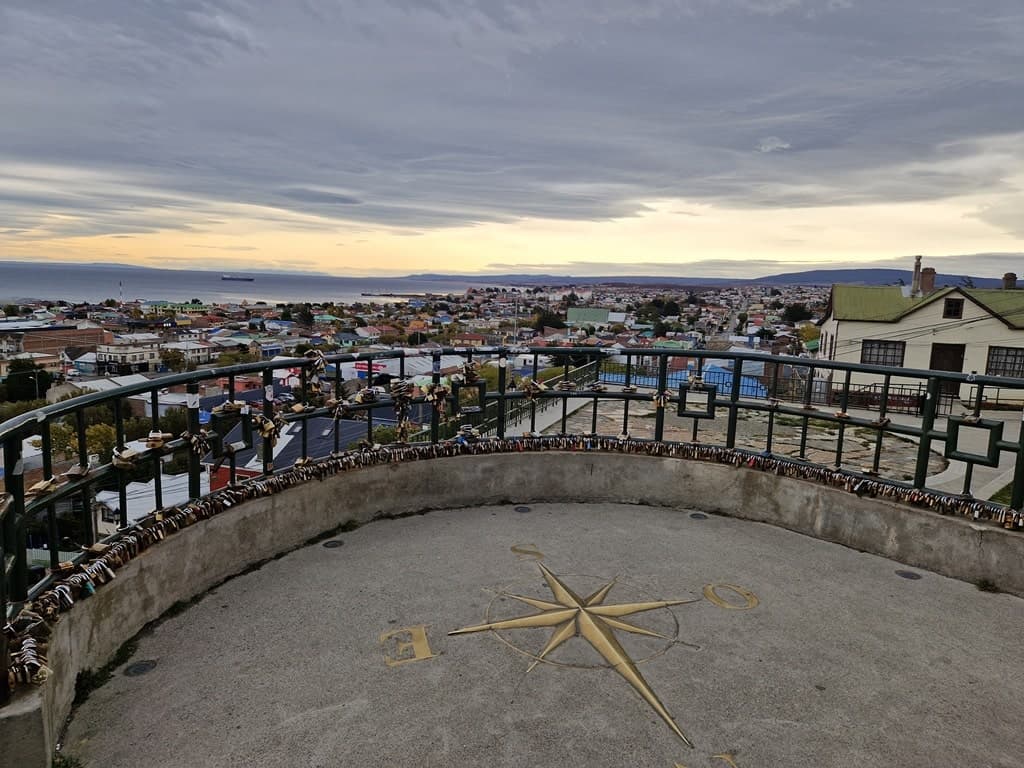
For panoramic views out across the urban area and water, you should make your way up to Cerro de la Cruz. Translating to Hill of the Cross in English, the viewpoint is located just a short walk uphill from downtown, with a few steps to navigate to climb to reach the top.
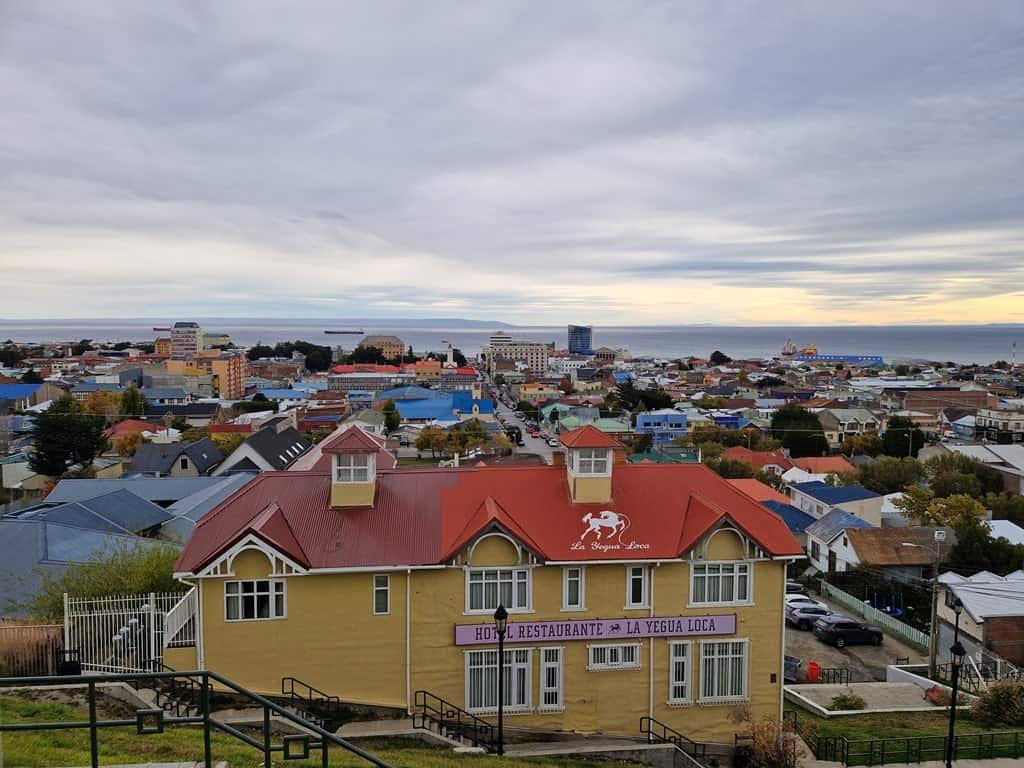
Marked by a cross and compass directions, the viewpoint is the ideal location to a must-visit if you want to soak up views of the city, the open sky, and the ocean. Come for sunrise or sunset and then wind up your experience with a visit to one of the nearby coffee shops.
Costanera del Estrecho
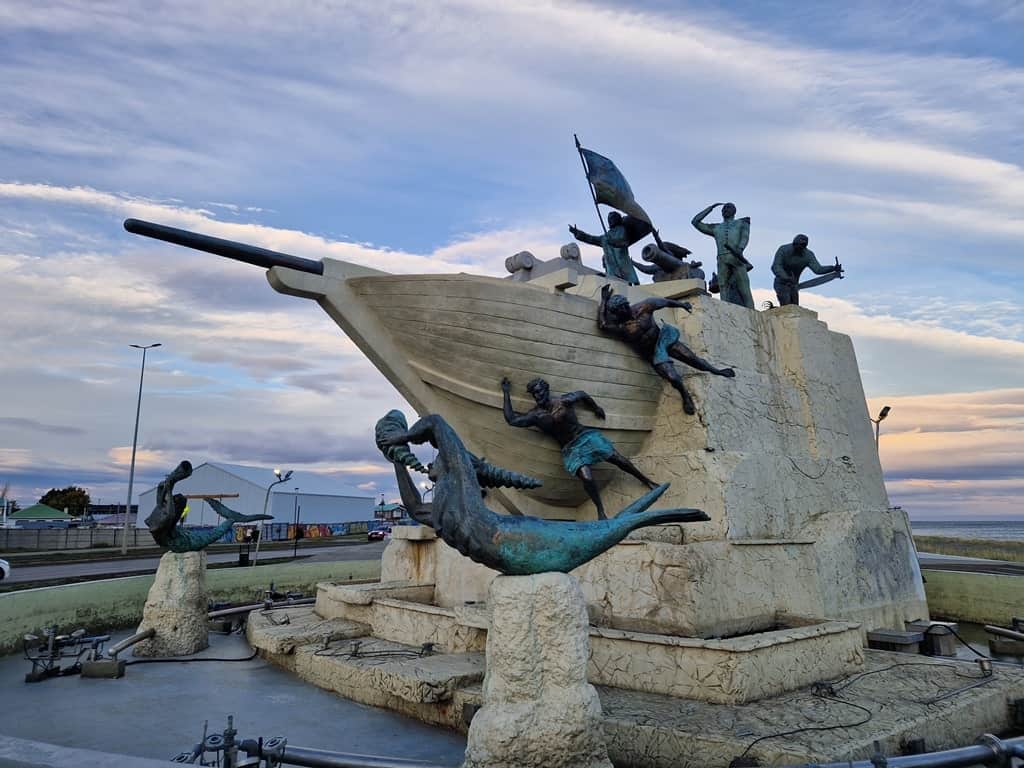
Known in Spanish as the Costanera del Estrecho, the town’s scenic waterfront promenade. As you walk along the promenade the way you’ll discover a selection of vantage points that are ideal for snapping some photographs.
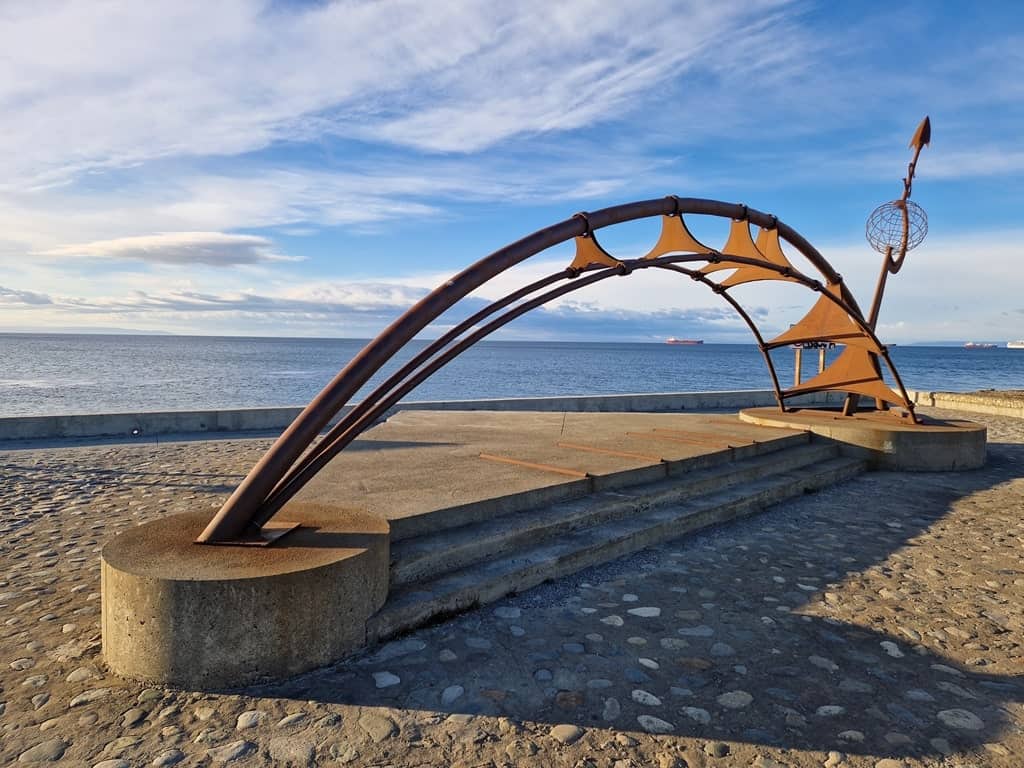
There are a number of benches where you can sit and soak up the views along with a selection of monuments that mark the town’s historic events. One particularly interesting monument is Monumento A Tripulantes Goleta Ancud, which pays tribute to the sailors who arrived here in 1843.
Punta Arenas Sign
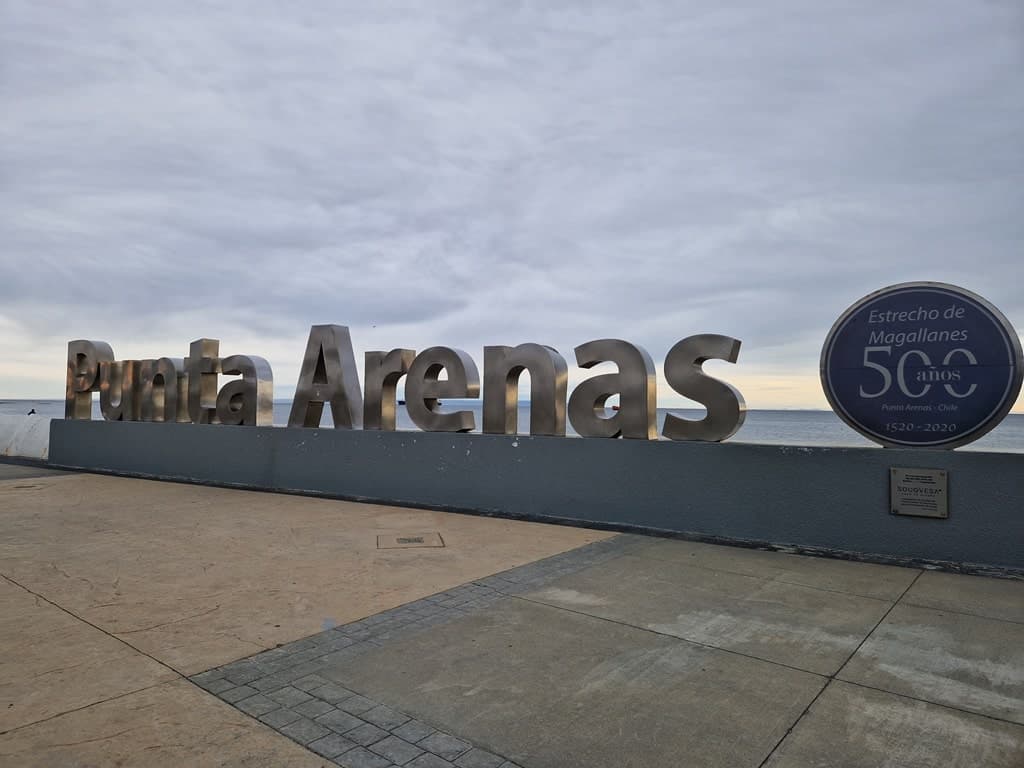
While you stroll alongside the Strait of Magellan along the Punta Arenas promenade don’t miss the Punta Arenas Sign. Spelling out the town’s name in giant letters, this iconic photo opportunity is a must-visit when you’re exploring the town and the perfect Instagram shot to post on your grid.
Museo Regional de Magallanes
Step inside this museum and into a world of interesting artifacts and curios. Situated inside one of the city’s luxurious mansions, it’s here where you can get a better understanding of the sheer wealth enjoyed by the early sheep farmers of the 19th century. The building was built in 1903 as the home of Mauricio Braun and Josefina Menendez,
Founded in 1982, the museum’s various collections chart periods of history of the region and the city, from the 16th century to the 20th century. The story of the area is told through a multitude of carefully curated objects with the museum’s displays divided into three sections.
The first section is dedicated to European furnishing and includes examples of neoclassical and Art Nouveau design. The second section belongs to the history of the region and the city are exhibited. The final section details the everyday life that took place in the old mansions’ including the kitchens and servants’ rooms where you can also find a café which makes for an ideal break for refreshment.
Bulnes Fort
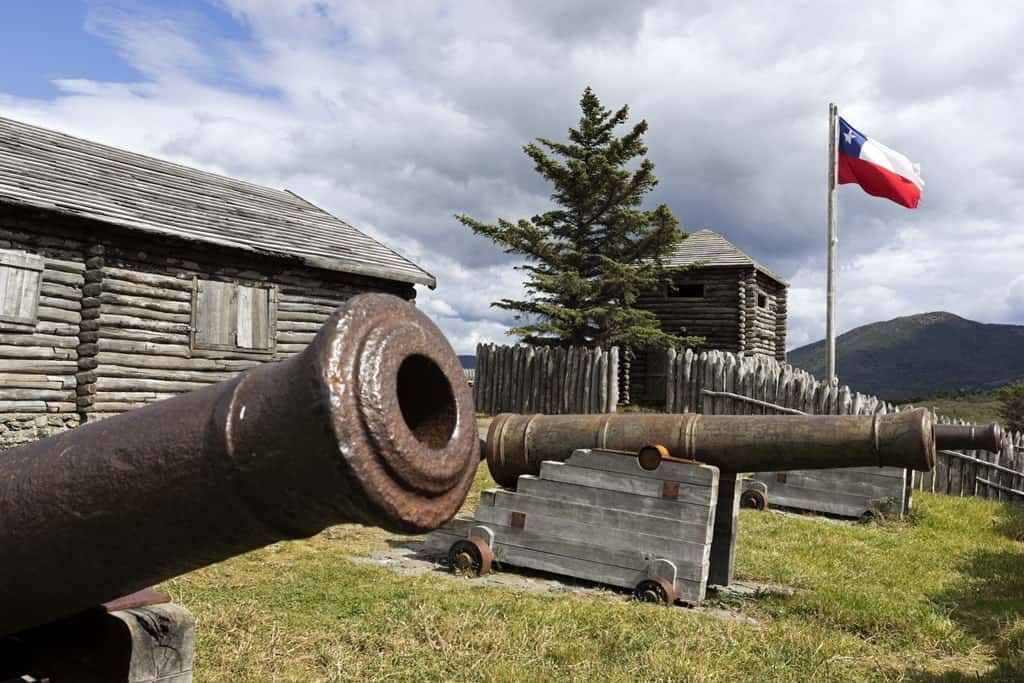
Bulnes Fort is a historic military fortress located in the city of Punta Arenas, Chile. The fort was built in the mid-19th century to protect the city from foreign invaders, particularly during the conflicts between Chile and neighboring Argentina.
Today, the Bulnes Fort is a popular tourist attraction, offering visitors a glimpse into the military history of the region. The fort features a museum that showcases a variety of artifacts and exhibits related to the military history of the area, including weapons, uniforms, and other memorabilia. Visitors can explore the battlements, barracks, and other structures of the fort, which have been well-preserved over the years.
In addition to its historical significance, the Bulnes Fort also offers stunning views of the surrounding landscape, including the Strait of Magellan and the nearby mountains.
The Naval and Maritime Museum of Punta Arenas
This museum is dedicated to the various ships that have arrived in the region on famous voyages of discovery. Opening its doors in 1994, the museum traces the history of voyages across the Strait of Magellan.
The Strait of Magellan is a sea crossing that separates the mainland of South America from the Tierra del Fuego archipelago. The strait, first navigated by indigenous people in canoes, has been an important natural route between the Atlantic and Pacific. In 1520, the first European to discover the strait was Ferdinand Magellan who gave it his name.
At this dedicated museum, you can see various artifacts from ships that charted their voyages to the region. One of the highlights is the account given by the Chilean mission that saved Shackleton’s 1914 crew from being doomed in the wilds of Antarctica.
Other displays include a replica ship with a decorated bridge complete with maps and charts. The museum building itself is also noteworthy, having been built in 1910 for the Magellan naval station’s Commander-in-Chief.
Museo Salesiano Maggiorino Borgatello
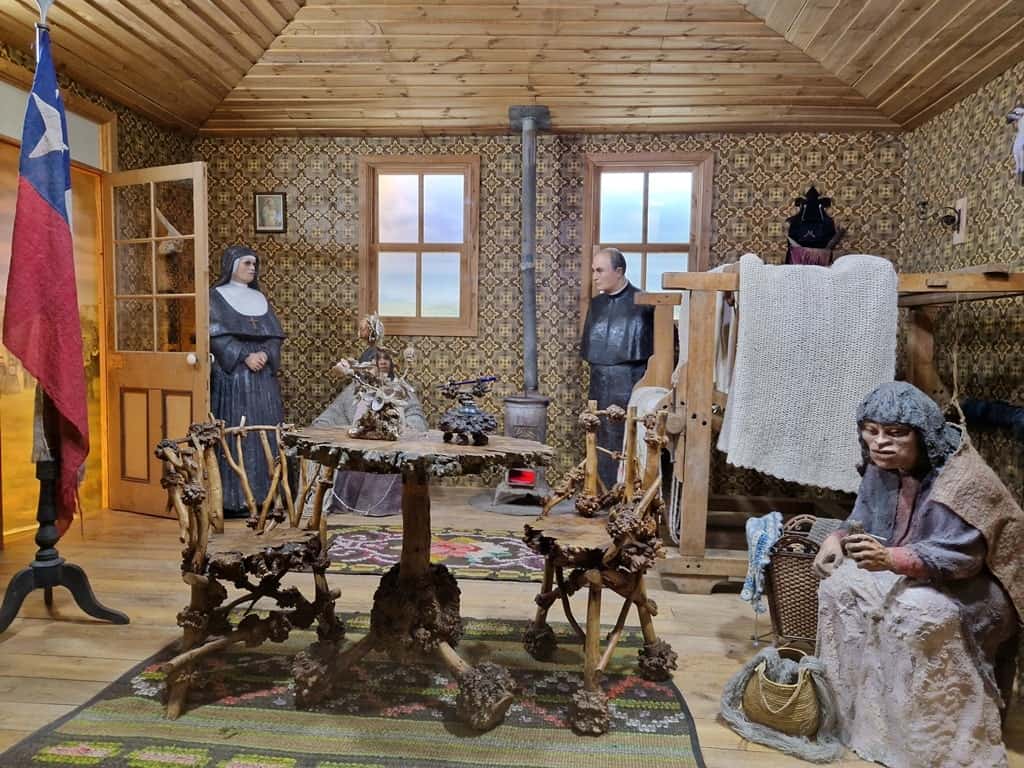
Opening in 1941 this is another of the urban area’s intriguing museums. The displays explore the Salesians’ vast collection of artifacts and the role they played in the area. The religious order spent much time collecting a wide array of cultural artifacts during their time. The order played a central role in settling the region it was and through this process, they gathered numerous ethnographic items.
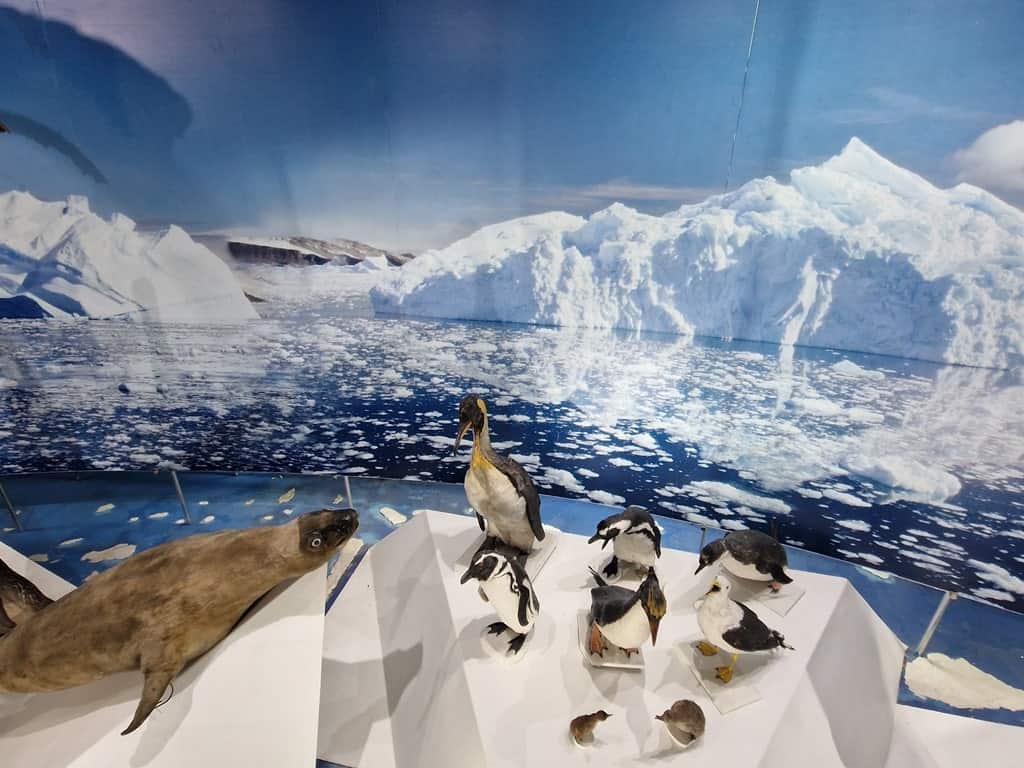
Exhibits are spread across eight different areas, with objects belonging to the Tehuelche and Mapuche people – the original inhabitants of the area before the arrival of colonial voyages. The central room covers testimonies of the Spanish conquest.
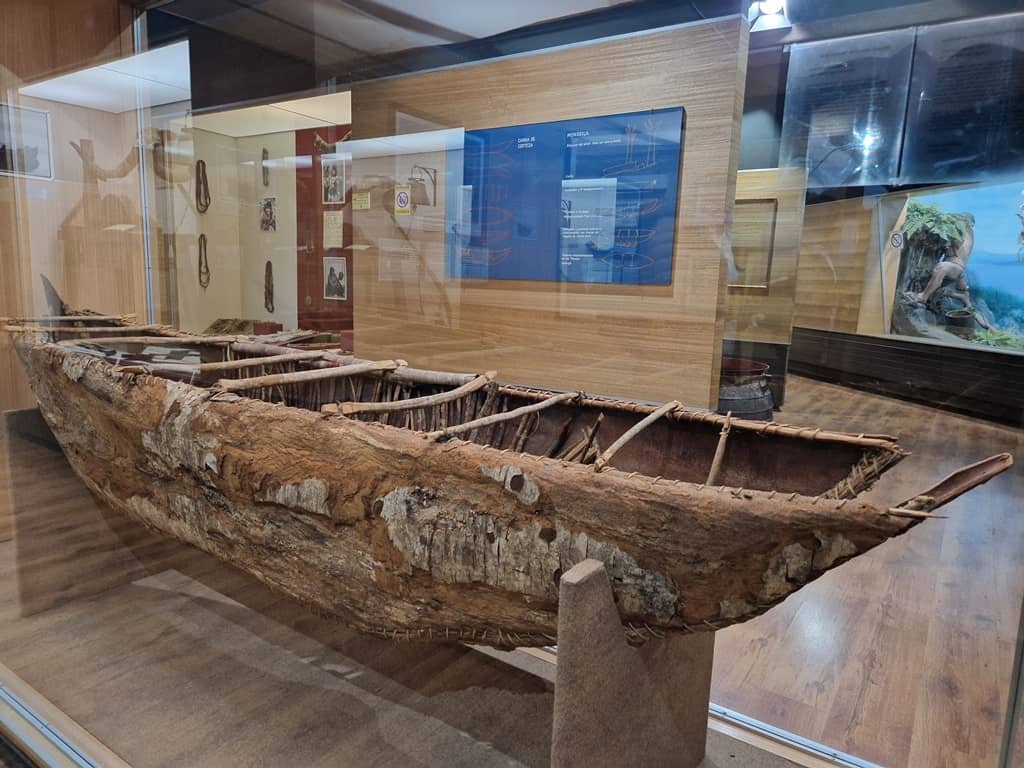
There are also objects from the Mimosa, a ship that left from Liverpool in 1865 with 153 Welsh settlers on board – the first group to permanently settle in the region.
Museo Río Seco
This natural history museum is a must-visit for anybody remotely interested in the natural world. The passion project of two brothers, the local museum features a beautifully curated collection of animal skeletons. Founded in 2013, the brothers behind the space are artist Miguel Cáceres and marine biologist Benjamín Cáceres.
Together they have created a collection of birds, reptiles, and mammals that are native to the region. Located inside an old seaweed warehouse, it may not sound like the average tourist attraction, but it is a place of passion and creativity.
Each of the creatures has been arranged to seem as though they are moving through space, either flying overhead, peering around a corner, or looking for a bite to eat. The main attraction here has to be the skeleton of a whale that sadly washed up on the strait.
Day trip to Magdalena Island
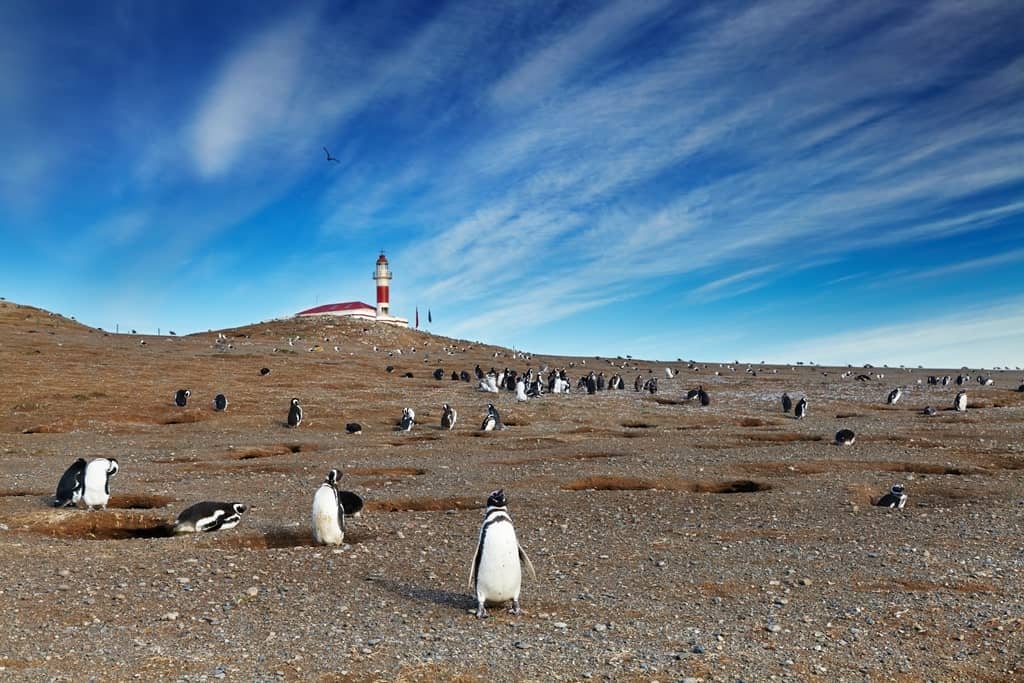
Take to the water on a day trip to the beautiful Magdalena Island. Located in the Strait of Magellan, the remote island is only reached by boat. A choice of tours leave from
Tres Puentes Pier in Punta Arenas, taking passengers to the island in around two hours. Once there you might be able to spot the colony of Magellanic penguins that live on the island. The curious creatures are present on the island in the warmer months, between September to March. Taking a trip to see them is a must for anybody who loves wildlife and photography.
I recommend: From Punta Arenas: Walk with Penguins on Magdalena & Marta Island tour.
Condor Sighting at Estancia Olga Teresa
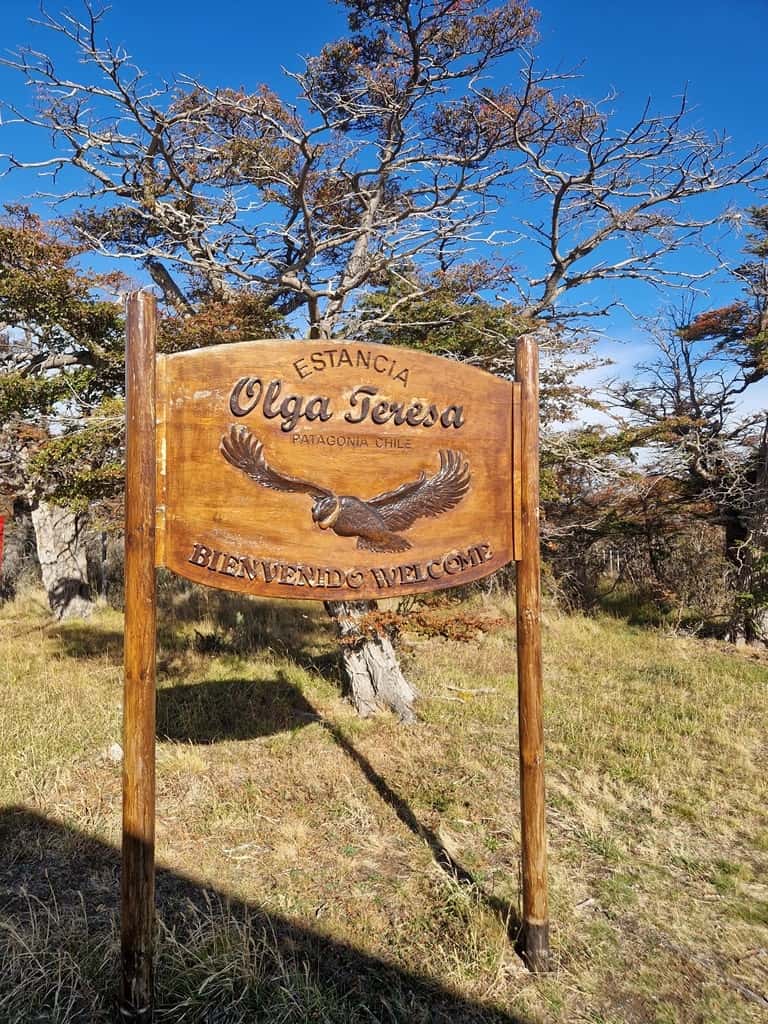
Estancia Olga Teresa is a picturesque ranch located 60 minutes away from Punta Arenas, in an area known for its stunning landscapes and diverse wildlife. One of the most exciting experiences that visitors can have at the ranch is a Condor sighting.
The Andean Condor is one of the largest birds in the world, with a wingspan of up to 10 feet. These majestic birds are known for their impressive soaring abilities and are a symbol of freedom and power in many cultures.
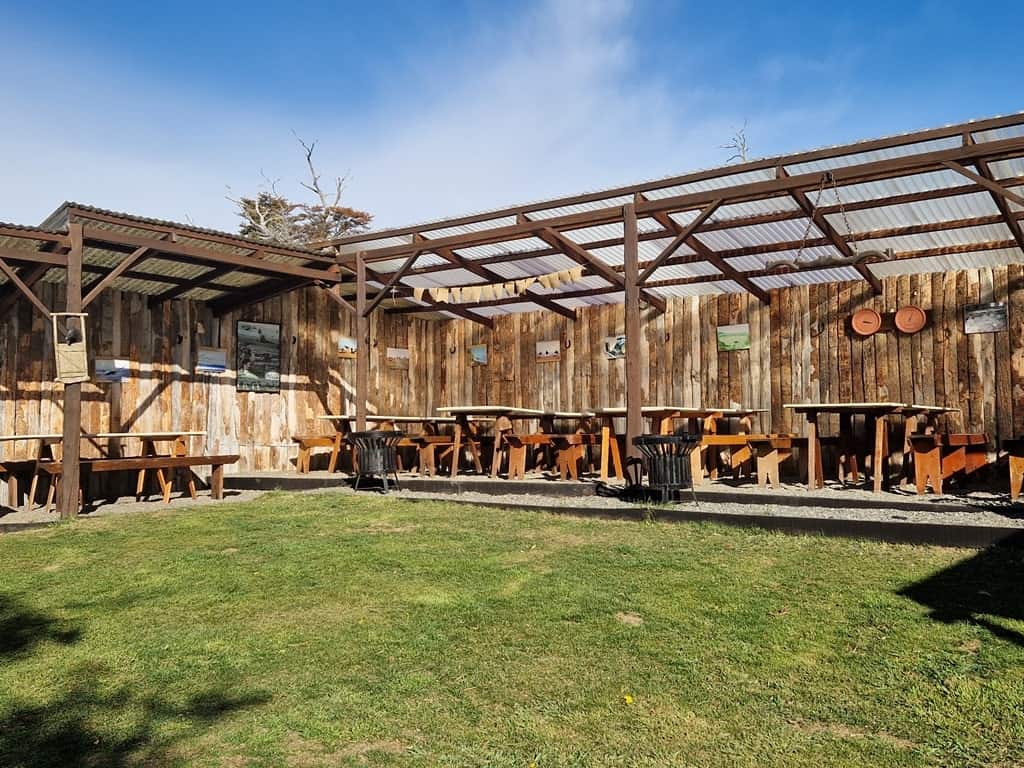
At Estancia Olga Teresa, visitors can observe these magnificent birds in their natural habitat, soaring high above the mountains and valleys. The ranch offers guided tours that take visitors to the best spots for Condor sightings, providing a unique opportunity to witness these incredible creatures up close.
Day trip to Torres del Paine National Park
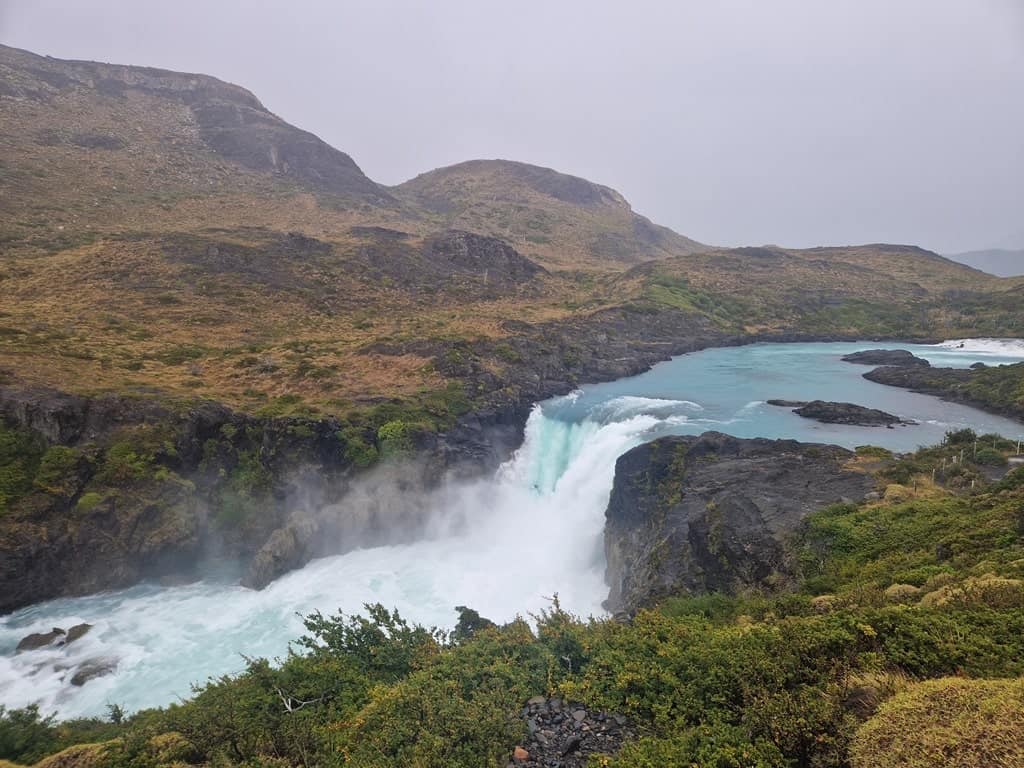
A UNESCO World Biosphere Reserve, Torres del Paine National Park is a major draw for visitors to the region. The large park is overlooked by a group of five towering peaks, known collectively as the Torres, the tallest of which is an enormous 2,850 meters tall.
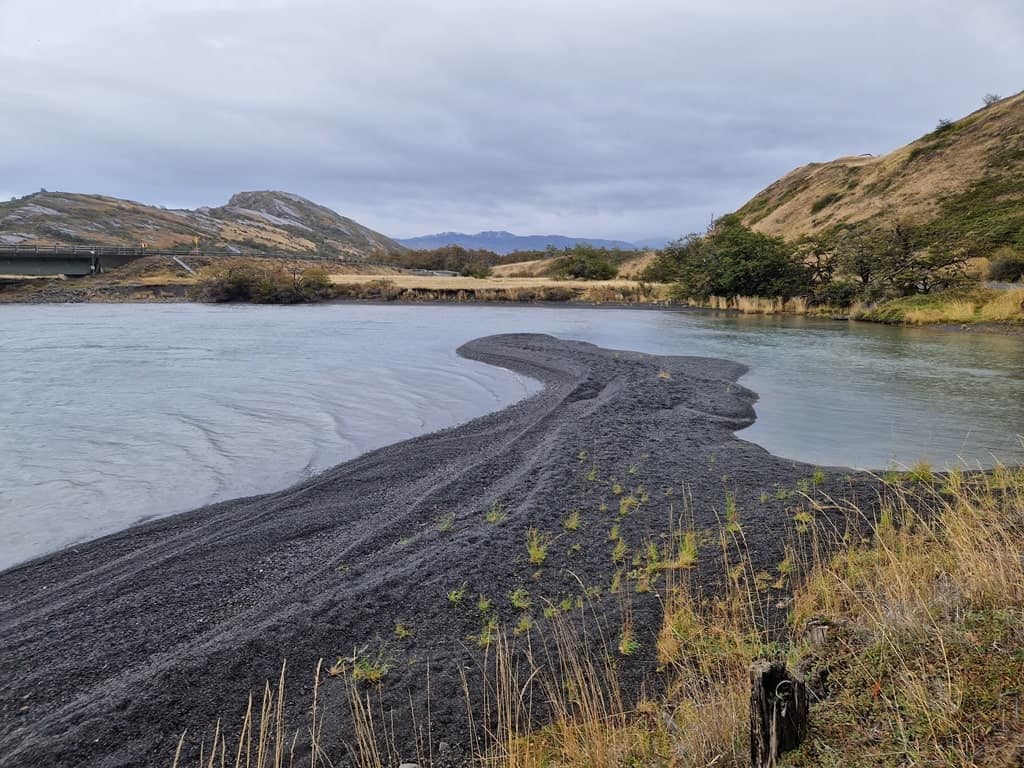
There’s more to the park than its lofty heights. The incredible landscape is home to hundreds of species of birds and mammals, as well as the third-biggest ice field in the world. It takes around four hours to drive from Punta Arenas to Torres del Paine National Park.
Rather than driving yourself, a good option is joining one of the day trips which take you from the town all the way to the park and back again and include tour guides.
You might be interested in this full-day tour to Torres del Paine.
Bar Clinic
Take a set in this fun bar and select a drink from the enticing cocktail menu. This is the perfect place to stop by for a post-dinner drink on a Saturday night as it’s one of the town’s liveliest late-night spots. If you do turn up hungry, the burgers and other bar snacks are served in generous portions, and on weekday evenings you can make the most of the half-price drinks.
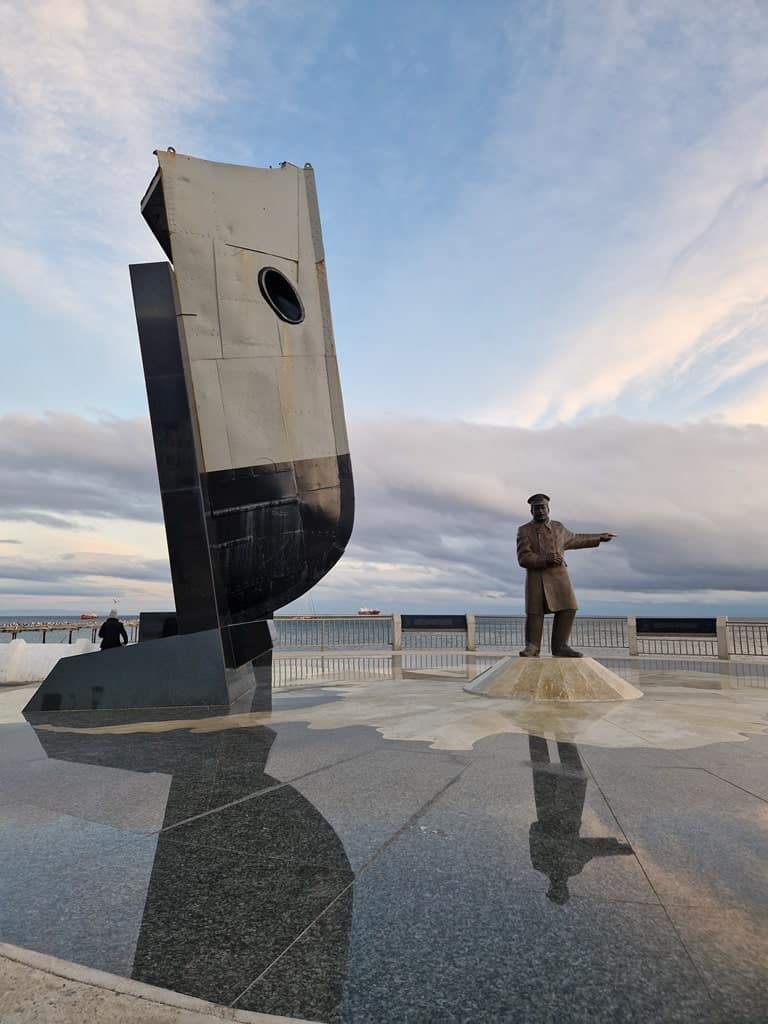
Cafe Inmigrante
Tucked away in the town’s old Croatian neighborhood is this welcoming café. Stop off here for a delicious array of freshly baked cakes and coffees served in a café that’s decorated with vintage items from the Croatian locals.
The menu boasts an array of enormously sized cakes, freshly squeezed juices, and a scattering of sandwich options too, all you have to do is sit back and relax and enjoy a long lunch.
La Vianda
The much-loved La Vienda is a to-go sandwich shop where you can pick up a range of bites to eat. Everything the shop sells is made fresh with high-quality ingredients in the on-site kitchen. The artisan sourdough bread sandwiches are the perfect choice for a picnic, the soups are organic, and the fresh juices are made from local fruits.
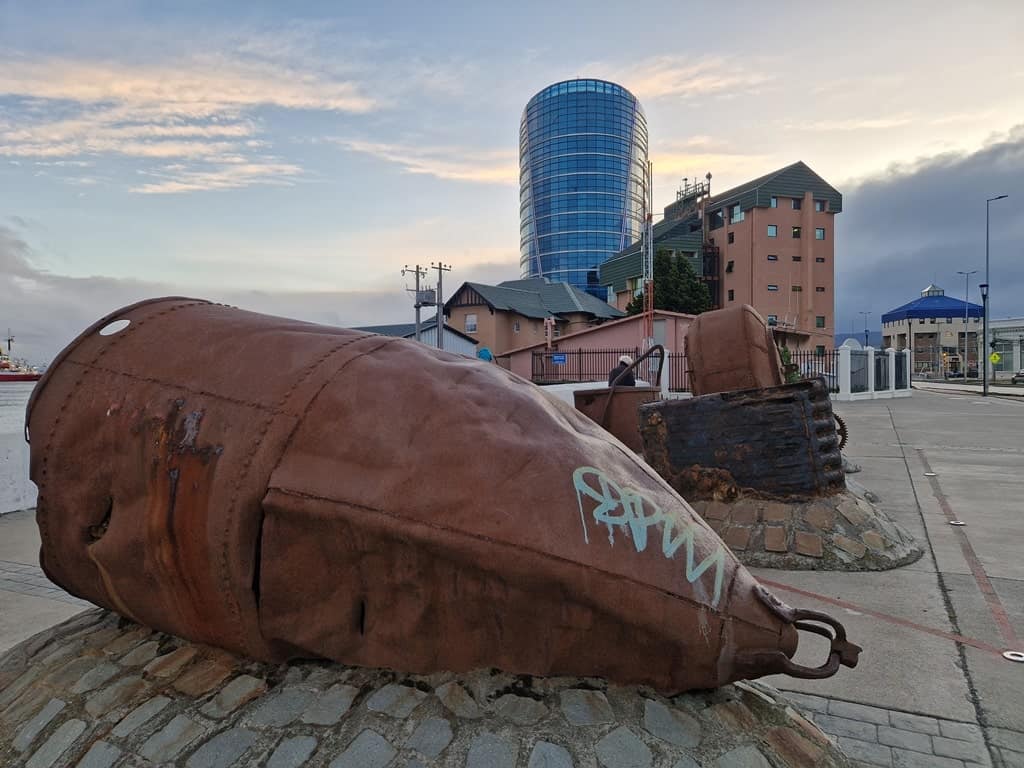
Bodega 87
A friendly hipster hangout, Bodega 87 is very popular and it’s not hard to see why. With its regular schedule of live music performances, affordable prices, and a menu of delicious drinks, you might just find yourself coming back here for more.
Kiosko Roca
This local staple is a magnet for those looking to sample a slice of local life. The small eatery serves a steady stream of locals who are all eagerly awaiting their mini sandwiches. Known as chiropan, these small, breaded treats are deliciously filled with chorizo and cheese, the recommendation by those in the know is to wash it down with a refreshing glass of banana milk.
Speaking a bit of Spanish will help you get by here, but the helpful staff will try their best to guide you. The service is quick, the food is fast and the taste is delicious.
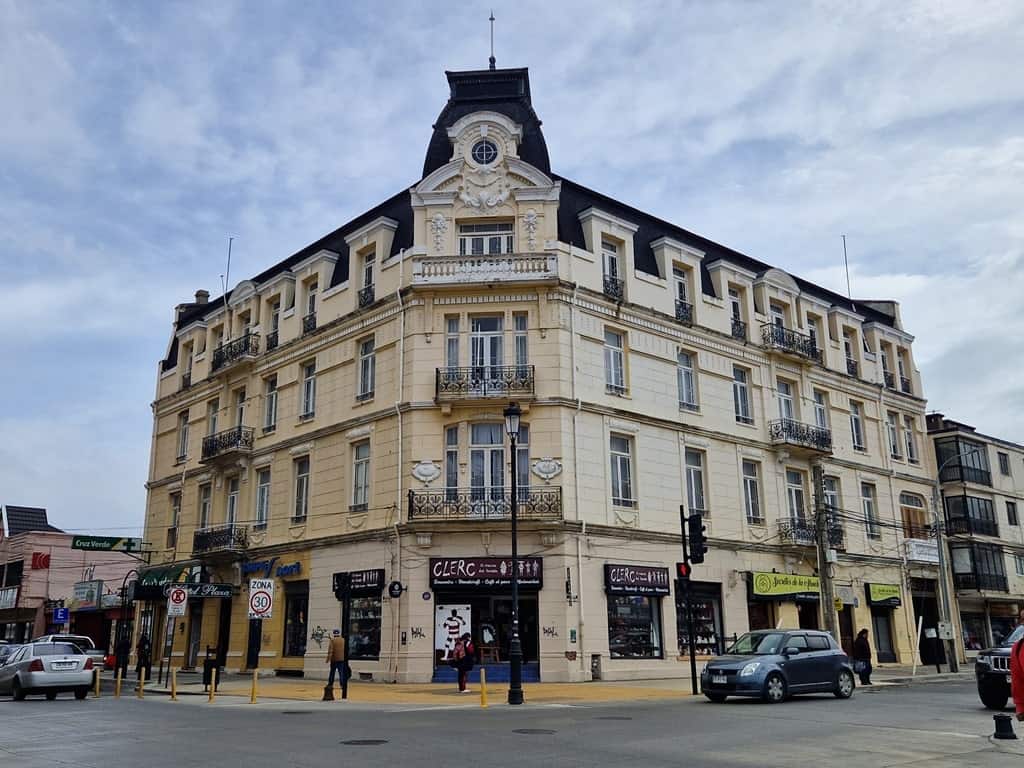
Meraki Café
Travelers to Punta Arenas who are looking for a strong caffeine fix should make a stop at this local favorite. Meraki Café brews up a delicious choice of single-origin beans alongside a menu of sandwiches and sweet treats. You can even buy bags of beans to take with you on your onward travels.

